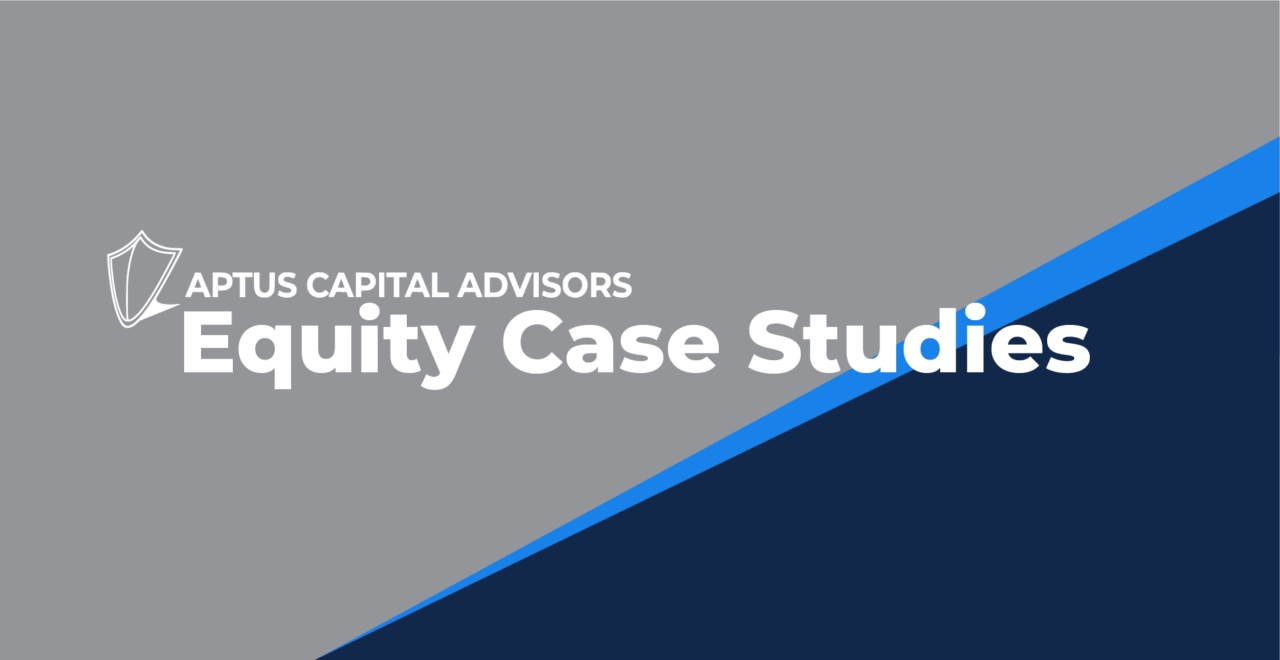Thinking well is a superpower. It’s not a character trait that receives much attention, but I’d argue, it’s what matters. All other qualities take a back seat to the ability to think well.
Thinking well is a consequence of deep understanding, and it’s that understanding which opens up the ability to problem solve and create in different angles. IQ matters, but not like an understanding of the subject at hand. If I have a boogered up bush hog, I don’t want the latest Ivy league grad’s help. I want the guy in overalls that’s farmed his whole life and does his own maintenance.
Investors’ ability to think well is being tested by this market. The SPDR S&P 500 ETF (“SPY”) closed April down -12.99% for the year. The iShares Core US Aggregate Bond ETF (“AGG”) closed down -9.43% over the same period. Longer term bonds, as measured by the iShares 20+ Year Treasury ETF (“TLT”), are down -19.05% on the year! There’s been next to no place to hide.
Think about those numbers. Investors who hold ‘balanced’ portfolios and have been trained that stocks are risky and bonds are conservative, have watched both sides of the coin take it on the chin year to date. TLT and exposures like it, have been a staple holding in many portfolios designed to protect against stock declines. I’m afraid the historical definition of what’s risky and what’s conservative may be a thing of the past.
We believe there’s an unfolding opportunity for advisors in this market. Your clients need you. We will touch on portfolios, but before we get there, I’d urge you to proactively leverage us to help communicate the how and why of our portfolios and the confidence we have in our current positioning.
You deal with smart investors, many of whom have worked hard for their assets in a variety of fields, and they need your help to think well. Investing is not what they do every day. If my inbox and phone are any indicator, we are teetering on the level of drawdown that triggers investors to start worrying. Emotionally triggered thinking is not thinking well, and can lead to financial decisions that create unnecessary friction on the path to a successful outcome.
No Risk, No Return
Generating a return requires assuming some risk. No risk = No return. If anybody tells you otherwise, run away.
Our job is to position for sufficient return while trying to understand the risk associated, as best we can.
We consider drawdown and longevity risk as enemies 1a and 1b. Drawdown risk exists, but positioning purely to avoid drawdown carries an even worse outcome as it exposes portfolios to holdings that will go broke safely. For example, holding a near zero interest cash position while inflation is what it is, exposes portfolios to a level of negative real rates we haven’t seen in decades.
This is the issue all investors are dealing with, and the exact reason for our comments above about the historical definitions of what is risky and what is not.
To generate a return in today’s market, you’re almost forced to hold stocks, the historically defined ‘risk asset’. We are not in an environment where there’s sufficient compensation for the risk embedded in bonds, the historically defined ‘conservative asset’.
Consider this…as I type, the indicated yield on AGG (a measure of the overall bond market) is right at 2%. Holders of the AGG have lost nearly 5 years of annual income purely off price decline just through April. Again, what’s been defined as conservative in the past may not be so in the future.
Our entire thesis and portfolio process is designed to help solve the issues of today’s market. We aim to hold more stocks and less bonds while keeping risk in check through injecting the ownership of volatility (more to come on this front).
Windshield vs Rearview
We think our portfolios have held up relatively well this year vs benchmarks. That’s not a pat on the back as I’m aware that negative returns are negative returns even if they are ‘less negative’.
Most of our portfolios are down in the -9% to -11% range and because of what’s happened in bond land, it’s hard to distinguish the conservative vs. the aggressive.
What matters is what’s to come.
We believe stocks have greater potential for return and they can help defend against inflationary pressures. We believe bonds continue to have a) poor potential for returns, b) cannot help defend against inflationary pressure, and c) lack the ability to provide correlation benefits as they have in the past.
Therefore, we hold more exposure to stocks as return drivers of the portfolio. We understand that more stock exposure can lead to more potential for drawdown risk. To address, we blend in exposure to volatility in the form of market hedges – which have been effective so far and positioned for even more effectiveness if the current market drawdown gets worse.
In preparation of volatility and to further explain our approach, we wrote these pieces:
Those items are critical to understand in this environment…please take a few minutes to read if you have not already.
Positioning
To use the race car analogy from David Dredge of Convex Strategies, we believe our portfolios are better positioned to compound capital, vs. traditional balanced allocation portfolios. We have a stronger engine (more stocks) with better brakes (volatility).
Historically, bonds have been used as a risk mitigation tool. Portfolios have been able to dampen volatility by allocating to bonds as a way of driving slower. The need for great brakes was unwarranted. Bonds, even though they were a weaker engine, compensated you through yield, price appreciation, and correlation benefits to your stocks. Driving slower was ok. If you are looking through the windshield, allocation decisions of the past should not be as effective in the future.
Our approach is different in that we lack the dependence on bonds in favor of a blend of more stock and convexity through long volatility.
We saw our approach walk the walk during the volatility of 2020. That was a quick selloff in stocks, with a massive spike in volatility as VIX (a measure of volatility) rose above 80. This year’s pullback has been much different. It’s been over 4 months with VIX remaining somewhat calm, as it currently sits near 33.
What happens next should be interesting and our positioning should be communicated. Can we avoid all risk? No, but are we positioned to:
- Know our portfolios have resistance to falling markets
- Know we can benefit from rising markets
Clients need to know this. Our hedges (volatility exposure) are beefed up. We carry elevated notional exposure along with higher deltas. Translation, the effectiveness of our hedges will be more apparent upon April’s selloff continuing into May.
While we like the protection we have in place, we really like that it frees up our ability to seek more return in other areas of today’s market.
Conclusion
The market has been an incredible mechanism for compounding capital over longer periods of time. This simple fact gets lost in the headlines quickly…even quicker when those headlines are accompanied by negative price action.
There are going to be bad headlines, and potentially more negative price action. None of that changes our belief that the market is the most efficient vehicle for most investors to grow their wealth. It’s our job to help manage portfolios in a way that produces return streams that are digestible and sufficient. We aim to deliver returns streams that keeps behavioral issues at bay.
We’ve seen terrible decisions made during negative markets over the years. The current level of market and portfolio drawdown is close to the tipping point where worries become ‘ok, I’ve got to do something’. Zero, I repeat zero, of those decisions have improved an investors ability to compound capital. Emotional thinking is not our best thinking. Your clients have you and us to help them think well.
We are as confident as we’ve been in our positioning. We believe portfolios are prepared for this market to rebound or this market to go through more bouts of volatility. Our hedges are primed, and we will be able to monetize and deploy back into cheaper valuations if the opportunity arises.
We are available and happy to chat with you and/or clients if you’d like to walk through the details of positioning at account or fund level. We are hopeful our confidence in process and the math supporting it will allow thinking well about the future.
As always, thank you for your trust.
Disclosures
Past performance is not indicative of future results. This material is not financial advice or an offer to sell any product. The information contained herein should not be considered a recommendation to purchase or sell any particular security. Forward-looking statements cannot be guaranteed.
This commentary offers generalized research, not personalized investment advice. It is for informational purposes only and does not constitute a complete description of our investment services or performance. Nothing in this commentary should be interpreted to state or imply that past results are an indication of future investment returns. All investments involve risk and unless otherwise stated, are not guaranteed. Be sure to consult with an investment & tax professional before implementing any investment strategy. Investing involves risk. Principal loss is possible.
The SPDR® S&P 500® ETF Trust seeks to provide investment results that, before expenses, correspond generally to the price and yield performance of the S&P 500® Index (the “Index”)
The iShares Core U.S. Aggregate Bond ETF seeks to track the investment results of an index composed of the total U.S. investment-grade bond market.
The iShares 20+ Year Treasury Bond ETF seeks to track the investment results of an index composed of U.S. Treasury bonds with remaining maturities greater than twenty years.
The VIX Index is a calculation designed to produce a measure of constant, 30-day expected volatility of the U.S. stock market, derived from real-time, mid-quote prices of S&P 500® Index (SPX℠) call and put options.
Advisory services are offered through Aptus Capital Advisors, LLC, a Registered Investment Adviser registered with the Securities and Exchange Commission. Registration does not imply a certain level or skill or training. More information about the advisor, its investment strategies and objectives, is included in the firm’s Form ADV Part 2, which can be obtained, at no charge, by calling (251) 517-7198. Aptus Capital Advisors, LLC is headquartered in Fairhope, Alabama. ACA-2205-1.



